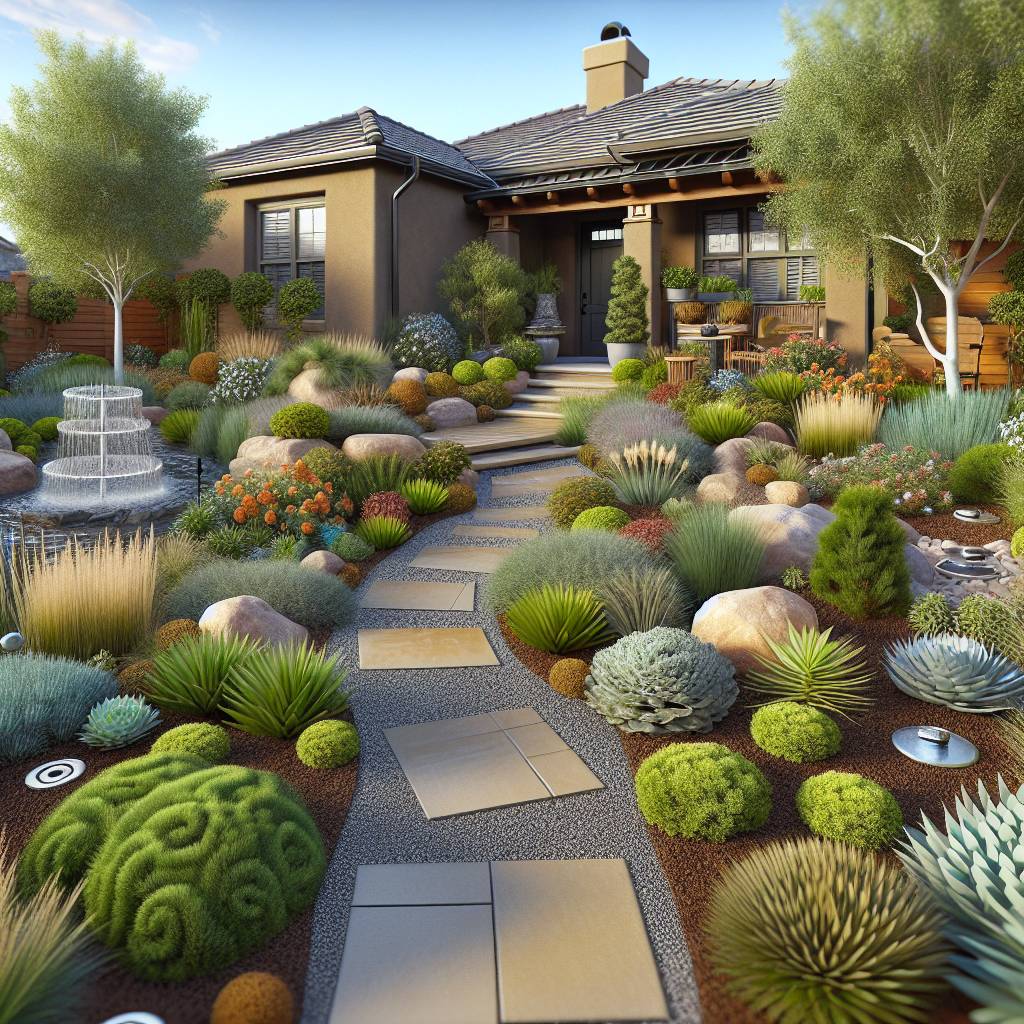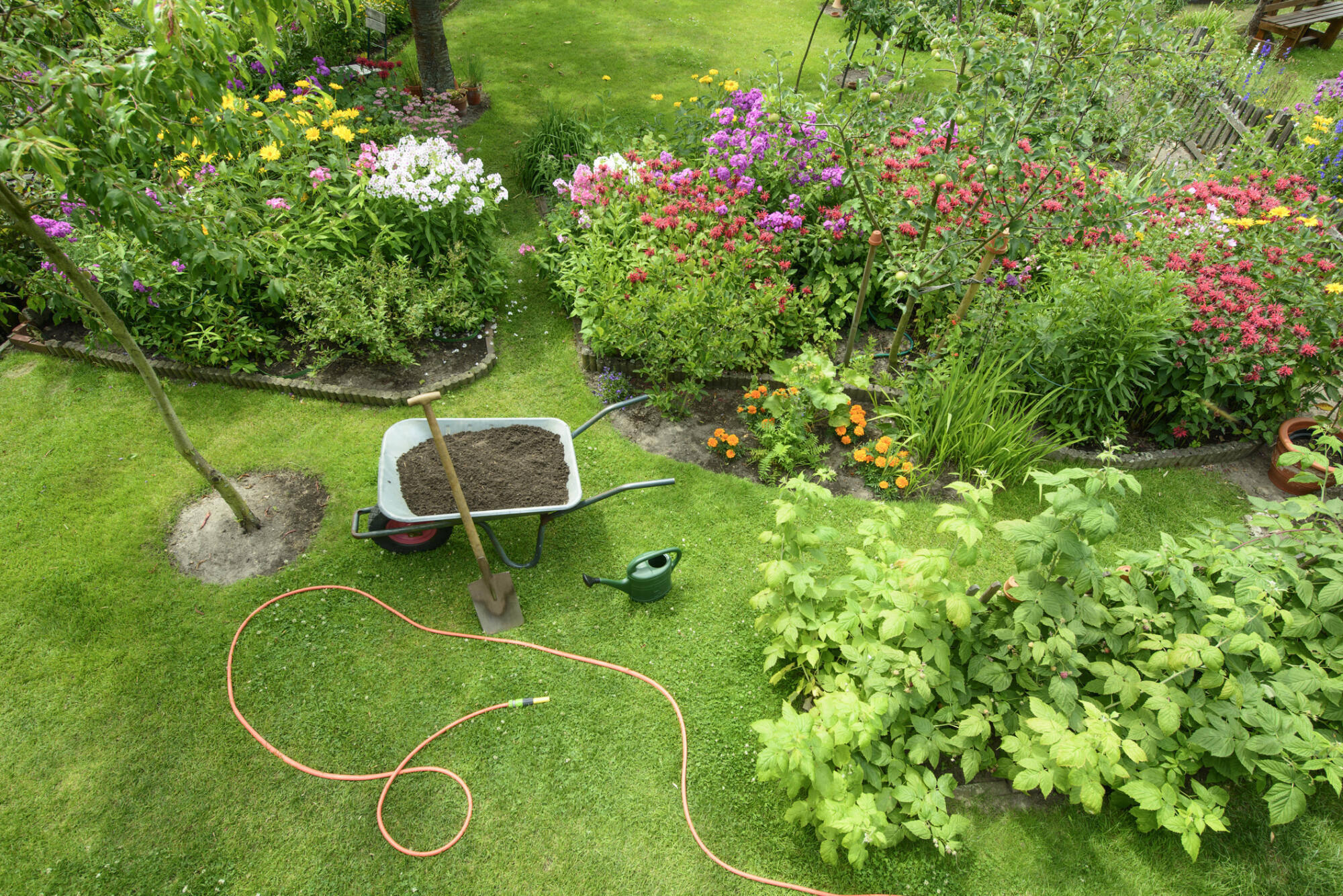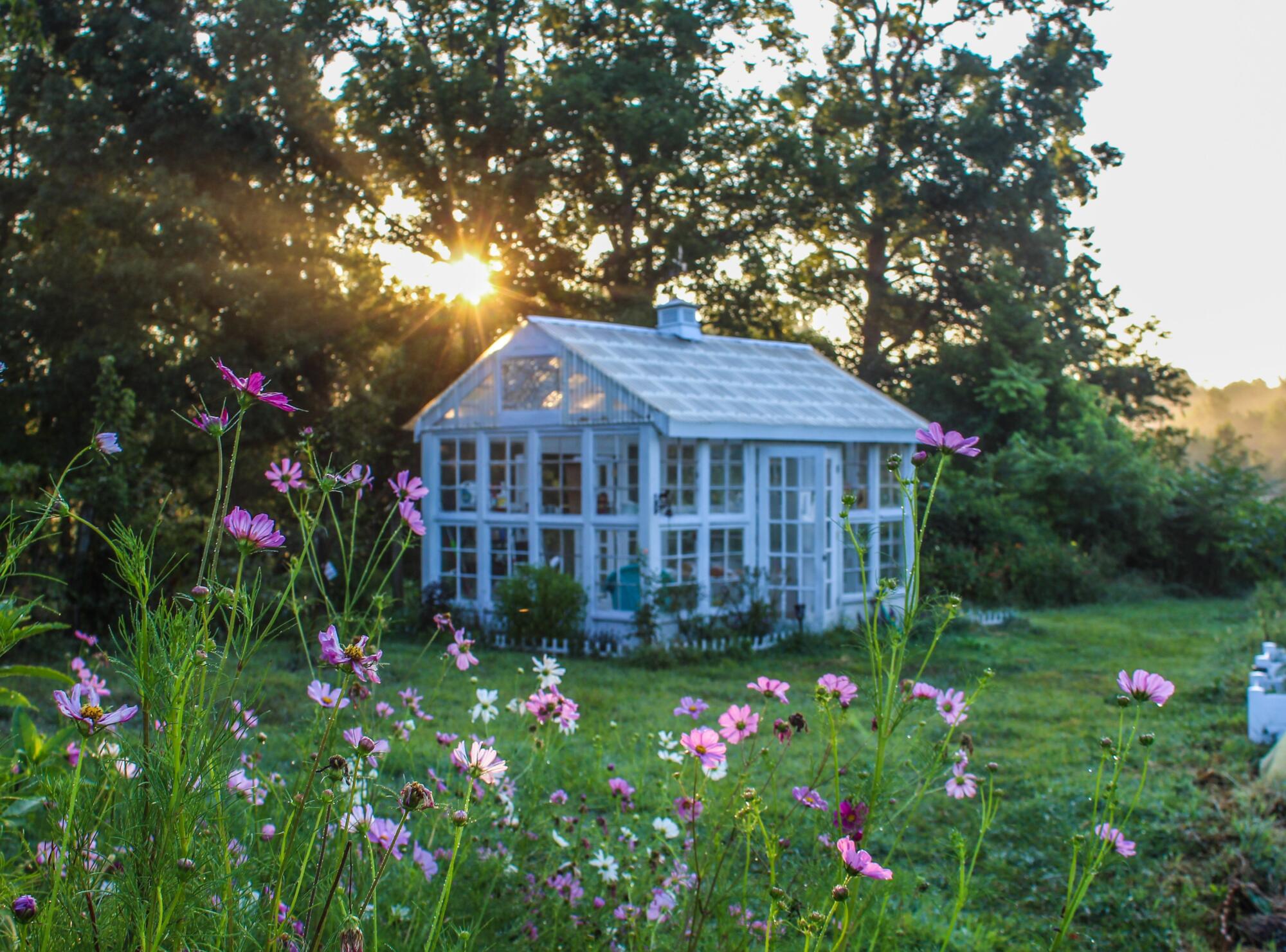Did you know that up to 60% of a household’s water consumption goes toward irrigating the garden? With water scarcity becoming an increasingly pressing issue, it’s time to rethink traditional gardening methods. Enter xeriscaping – a sustainable landscaping approach that conserves water and reduces maintenance.
Xeriscaping isn’t just about using drought-resistant plants; it encompasses thoughtful design, soil improvement, efficient irrigation, and mulching techniques. Whether you’re dealing with arid climates or simply want to minimize your environmental impact, implementing these landscaping principles can transform your yard into a thriving oasis while significantly cutting down on water usage. Let’s delve into the world of xeriscaping and unlock the secrets to creating a lush, vibrant garden in harmony with nature.
Key Takeaways
- Plan your xeriscape garden by considering the local climate, soil type, and available sunlight to ensure the best results.
- Improve soil quality by adding organic matter, such as compost, and using mulch to retain moisture and reduce water usage.
- Use efficient watering techniques like drip irrigation and rainwater harvesting to minimize water consumption in your xeriscape garden.
- Choose native plants that are well-adapted to the local environment, requiring less water and maintenance while providing habitat for local wildlife.
- Design your garden for low maintenance by grouping plants with similar water needs and using hardscaping elements strategically.
- Opt for an irrigation system that maximizes water efficiency, such as drip irrigation, and regularly check for leaks or malfunctions.
- Maintain your xeriscape garden by removing weeds, pruning plants as needed, and monitoring for any signs of stress or pest infestations.
- Enhance the aesthetics of your garden by incorporating diverse textures, colors, and seasonal interest through careful plant selection and placement.
Planning Your Xeriscape Garden
Landscape Analysis
Analyzing the landscape is crucial when implementing xeriscaping principles for home gardens. By understanding the terrain and climate, you can tailor your xeriscaping strategies to suit your specific environment. For instance, if you live in a region with hot, dry summers and mild winters, you’ll need to choose plants that thrive in these conditions and require minimal water use. This analysis also guides the layout and design of your garden, ensuring that it complements the natural features of your landscape.
Furthermore, considering factors such as sunlight exposure and soil type during landscape analysis helps determine which areas are best suited for certain plant species. This knowledge enables strategic placement of plants within your landscaping to maximize their growth potential while minimizing water use.
Strategic Design
When planning a xeriscape garden, strategic design and landscaping play a pivotal role in optimizing water efficiency while maintaining visual appeal. By carefully selecting plant varieties based on their water needs and grouping them according to those requirements, you can create microclimates within your garden that promote sustainable growth without excessive watering.
Moreover, incorporating landscaping elements like mulch or decorative gravel not only enhances the aesthetic value but also aids in retaining soil moisture by reducing evaporation. These design strategies aim to strike a balance between beauty and functionality – creating an environment that thrives with minimal water input while requiring little maintenance.
Plant Selection
Selecting suitable plants is fundamental to successful xeriscaping practices at home gardens. Opting for drought-resistant species such as lavender or yarrow ensures that your landscaping remains vibrant even during periods of limited rainfall or watering restrictions. Native plants are particularly advantageous as they have evolved to thrive in local climates and require minimal intervention once established.
For example, choosing native grasses like blue grama or buffalo grass not only conserves water resources but also supports local biodiversity by attracting indigenous wildlife such as birds and butterflies. Considering each plant’s adaptability to local climate conditions and water use guarantees long-term sustainability within your xeriscape garden.
Soil Improvement Strategies
Improving Quality
Xeriscaping, with its focus on soil amendments and conservation, significantly enhances the overall quality of home garden landscapes by reducing water use. By incorporating xeriscaping principles, homeowners can foster healthier plant growth and establish more resilient garden ecosystems. This approach not only leads to improved visual appeal but also reduces the need for extensive maintenance efforts. As a result, xeriscaping effectively minimizes the time and resources typically required to maintain traditional gardens.
Furthermore, xeriscaping principles aim to reduce soil erosion by promoting water retention in the soil through various techniques such as mulching and strategic plant selection. These practices encourage the development of robust root systems that contribute to stabilizing the topsoil, further preventing erosion.
Utilizing Mulch
One essential component of xeriscaping is utilizing mulch as a key strategy for improving soil health and moisture retention in home gardens. Mulch serves as a protective layer that helps retain soil moisture by reducing evaporation rates, thereby minimizing the frequency of watering requirements. This practice not only conserves water but also contributes to maintaining optimal soil conditions for plant growth.
Moreover, mulch acts as an effective barrier against weed growth while offering insulation to protect plant roots from extreme temperatures. By inhibiting weed proliferation, mulch plays a crucial role in preserving the integrity of garden ecosystems established through xeriscaping principles.
In addition to these benefits, utilizing mulch aids in enhancing overall soil quality, fostering favorable conditions for beneficial microbial activity within the soil structure. This contributes to improved nutrient cycling and organic matter decomposition processes critical for sustaining healthy plant growth in xeriscape gardens.
Efficient Water Use in Xeriscaping
Designing Irrigation
Efficient irrigation design is crucial for successful xeriscaping. It ensures that water is delivered precisely where it’s needed, promoting the health and vitality of plants. Drip irrigation systems are a key component of xeriscaping principles, as they minimize water wastage by delivering water directly to the plant roots. By optimizing water distribution, proper irrigation design supports sustainable gardening practices and reduces overall water consumption.
For example, instead of using traditional sprinkler systems that can lead to evaporation and runoff, drip irrigation delivers small amounts of water slowly and directly to the soil around plants. This targeted approach not only conserves water but also prevents weed growth by minimizing moisture on non-plant areas.
Another important aspect of efficient irrigation design in xeriscaping involves utilizing soil moisture sensors. These sensors help monitor soil moisture levels, allowing homeowners to adjust their watering schedules based on real-time data rather than relying on fixed timetables. By incorporating these technologies into their gardens, individuals can ensure that their plants receive just the right amount of water without any waste.
Drought-Tolerant Plants
One of the fundamental principles of xeriscaping is the use of drought-tolerant plants, which are well-suited for arid conditions and require minimal watering. These plants play a pivotal role in achieving sustainable landscaping practices while still adding beauty to home gardens. By choosing native or adapted drought-tolerant species such as lavender, yarrow, or agave, gardeners can significantly reduce their reliance on supplemental watering while maintaining an aesthetically pleasing landscape.
Moreover, integrating drought-tolerant plants into xeriscaped gardens promotes biodiversity and supports local ecosystems by creating habitats for native wildlife such as butterflies and bees. As these plants have evolved to thrive in low-water environments, they contribute to reducing overall outdoor water usage through decreased irrigation needs.
Incorporating a variety of textures and colors with drought-tolerant plant selections enhances visual interest within a xeriscape garden while simultaneously conserving natural resources like water—a win-win scenario for both homeowners and the environment.
Incorporating Native Plants
Benefits of Natives
Native plants offer numerous benefits for home gardens. They are well-adapted to local climates, requiring minimal maintenance and natural precipitation. This means less watering and upkeep, making them an excellent choice for homeowners looking to conserve water and reduce gardening efforts. Native plants play a vital role in supporting local wildlife and contribute to the preservation of ecosystems. By incorporating these plants into your garden, you can create a thriving habitat for birds, butterflies, bees, and other essential pollinators.
Furthermore, using native plants promotes biodiversity by preserving the natural balance of species in your area. This is crucial for maintaining healthy ecosystems as it helps prevent the dominance of non-native species that can disrupt the local environment. Moreover, promoting biodiversity through native plant cultivation also aids in conserving water resources by creating sustainable landscapes that require minimal irrigation.
Selection Process
The selection process for incorporating native plants involves careful consideration of various factors to ensure their success in your xeriscaped garden. When choosing which plants to incorporate into your landscape design, it’s essential to select those that are best suited to specific climate conditions prevalent in your region.
Considerations should include each plant’s adaptability not only to weather patterns but also soil types commonly found in your area. By carefully assessing these factors during the selection process, you can identify native plants that will thrive without excessive watering or chemical intervention while still providing visual appeal.
It’s important to take into account each plant’s water requirements when making selections for your xeriscape garden. Opting for low-water-use native species ensures that they remain resilient even during periods of drought or limited rainfall.
Designing for Low Maintenance
Limiting Turf Areas
Minimizing turf areas is crucial in implementing xeriscaping principles for home gardens. By reducing the expanse of turf, overall water demand in the landscape decreases significantly. With less turf grass to maintain, homeowners can save time and resources while promoting sustainable gardening practices. For instance, replacing traditional grass lawns with drought-resistant plants or hardscaping features like gravel paths not only reduces water consumption but also adds visual interest to the garden.
Focusing on alternative ground covers is an effective strategy to limit turf areas and support xeriscaping principles. Ground cover options such as creeping thyme, sedum, or clover offer diverse textures and colors while requiring minimal maintenance. These alternatives not only help conserve water but also contribute to biodiversity by providing habitats for beneficial insects and wildlife.
Mulch Benefits
Incorporating mulch into garden beds brings numerous benefits that align with xeriscaping principles for home gardens. Firstly, mulch acts as a protective layer that conserves soil moisture by minimizing evaporation and reducing the frequency of watering needs. This helps create a more resilient garden ecosystem that can thrive even during dry spells or drought conditions.
Moreover, mulch plays a vital role in suppressing weed growth within garden beds and landscapes. By preventing weeds from competing with desirable plants for water and nutrients, mulch promotes healthier plant growth while simultaneously decreasing the need for manual weeding efforts.
Mulch contributes to soil insulation by regulating temperature fluctuations and protecting plant roots from extreme heat or cold. This creates optimal growing conditions for native plants used in xeriscaping designs by fostering root development and microbial activity within the soil.
Irrigation System Efficiency
Water-Wise Techniques
Water-wise techniques are crucial for implementing xeriscaping principles for home gardens. By prioritizing the efficient use of available water resources, these techniques promote responsible watering habits while maintaining healthy gardens. For instance, drip irrigation systems deliver water directly to the base of plants, minimizing evaporation and ensuring that water is used where it’s needed most. Another example of a water-wise technique is incorporating moisture-retentive mulch around plants to reduce evaporation and retain soil moisture.
Implementing these methods supports sustainable gardening practices that conserve water effectively. For instance, grouping together plants with similar water needs helps optimize irrigation system efficiency by avoiding overwatering or underwatering specific areas. Capturing rainwater in barrels or cisterns during wet periods for later use in dry spells aligns with water-wise techniques, reducing reliance on traditional irrigation systems.
Maintenance Tips
Effective maintenance plays a vital role in ensuring the longevity of xeriscaped gardens. Proper care includes regular inspections, pruning, and addressing any issues promptly to prevent wastage of precious water resources due to leaks or malfunctions within the irrigation system.
Maintenance tips focus on sustaining a thriving landscape with minimal resource input. For example, adjusting sprinkler heads regularly ensures they are directing water onto plant root zones rather than hardscapes like driveways or sidewalks. This simple action maximizes the effectiveness of an existing irrigation system, preventing unnecessary loss due to overspray.
Xeriscape Maintenance Practices
Regular Upkeep
Regular upkeep is crucial for maintaining xeriscaped gardens. It involves monitoring the overall health of plants, checking irrigation systems, and assessing soil conditions. By regularly inspecting these elements, gardeners can ensure that their xeriscaped gardens remain vibrant and healthy while efficiently conserving resources.
The goal of regular upkeep activities is to sustain a thriving landscape with minimal intervention. This approach aligns with the fundamental principles of xeriscaping, which prioritize sustainable landscaping practices. Through consistent monitoring and maintenance, gardeners can prevent issues from escalating and maintain an environmentally friendly garden environment.
For example:
- Checking for signs of stress or disease in plants
- Adjusting irrigation systems to meet the specific needs of different plant species
- Monitoring soil moisture levels to ensure optimal growing conditions
Seasonal Adjustments
Seasonal adjustments are integral to effective xeriscape maintenance. These adjustments involve adapting watering schedules based on seasonal weather patterns and making necessary changes to plant care practices accordingly. By aligning gardening practices with seasonal variations, gardeners can support sustainable management of their xeriscaped gardens.
Adapting watering schedules based on seasonal changes optimizes resource usage while promoting healthy plant growth. For instance, during periods of increased rainfall or cooler temperatures, it may be appropriate to reduce irrigation frequency to prevent overwatering and conserve water effectively.
Moreover, adjusting plant care according to seasonal changes supports the long-term health and vitality of the garden’s ecosystem by ensuring that plants receive adequate care tailored to their specific requirements throughout the year.
Enhancing Garden Aesthetics
Color and Texture
Xeriscaping principles for home gardens emphasize the use of colorful foliage and varied textures to create visual interest. By incorporating diverse colors and textures, homeowners can add vibrancy to their sustainable landscapes. For instance, planting succulents with different shapes and sizes alongside flowering shrubs can introduce a captivating contrast in texture and color.
Strategic use of color palettes is another key aspect of xeriscaped gardens. Homeowners can opt for plants with complementary or analogous colors to enhance the aesthetic appeal while conserving resources. For example, pairing blue fescue grass with yellow yarrow not only creates an eye-catching display but also reduces the need for excessive watering and maintenance.
Sustainable Beauty
The concept of sustainable beauty lies at the core of xeriscaping principles for home gardens. It involves combining aesthetic appeal with eco-friendly landscaping practices. Xeriscaped gardens showcase natural beauty while promoting environmental sustainability by using native plants that are well-adapted to the local climate.
Creating visually stunning landscapes through sustainable approaches benefits both homeowners and the environment. Not only do xeriscaped gardens provide an inviting front yard or backyard space, but they also contribute to water conservation efforts by minimizing irrigation needs. By reducing reliance on chemical fertilizers and pesticides, xeriscaping supports a healthier ecosystem within residential areas.
Conclusion
Summary
You’ve learned the essential principles of xeriscaping for your home garden. By planning strategically, improving soil quality, and using water efficiently, you can create a beautiful and sustainable landscape. Incorporating native plants, designing for low maintenance, and optimizing your irrigation system are crucial steps in achieving a thriving xeriscape garden. Maintaining your xeriscape and enhancing its aesthetics will ensure long-term success.
Now it’s time to put these principles into action. Start by assessing your garden space and identifying areas where you can implement xeriscaping techniques. Consider the specific needs of your region and select native plants accordingly. With careful planning and consistent maintenance, you’ll soon enjoy a stunning, eco-friendly garden that conserves water and supports local biodiversity.
Frequently Asked Questions
How can I plan my xeriscape garden effectively?
To plan your xeriscape garden, start by assessing your space, considering sunlight and soil conditions. Then, create a design that incorporates native plants and efficient irrigation systems to minimize water usage while maximizing visual appeal.
What are the key principles for improving soil in xeriscaping?
Key principles for improving soil in xeriscaping include adding organic matter like compost, using mulch to retain moisture, and avoiding excessive tilling to preserve the natural ecosystem of the soil.
How can I incorporate native plants into my xeriscape garden?
Incorporate native plants into your xeriscape garden by researching indigenous species that thrive in your area’s climate and soil. Choose a variety of native plants with different heights, colors, and textures to create an aesthetically pleasing landscape.
What are some low-maintenance design strategies for a xeriscape garden?
Low-maintenance design strategies include grouping plants with similar water needs together, utilizing hardscaping elements such as rocks or pathways, and selecting drought-tolerant plant varieties that require minimal upkeep.
What maintenance practices are essential for a thriving xeriscape garden?
Essential maintenance practices for a thriving xeriscape garden include regular weeding to prevent competition for resources among plants, monitoring irrigation systems for efficiency, and periodically assessing plant health to address any issues promptly.






